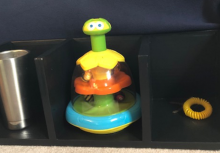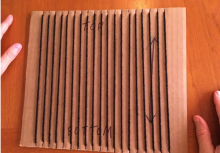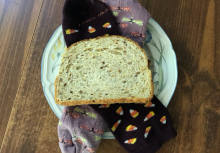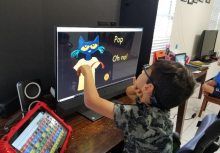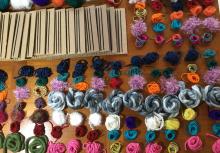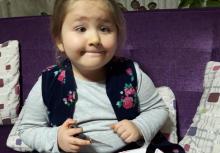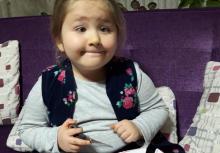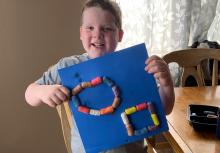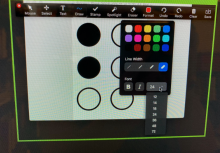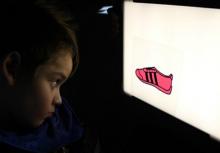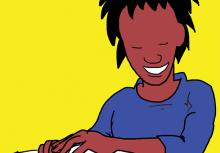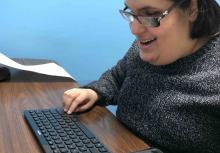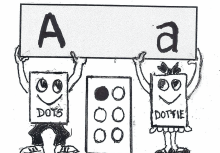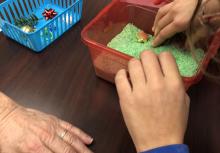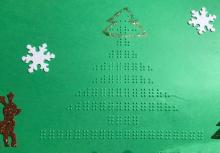Students who are visually impaired and blind may be visual, auditory or tactile learners. For many students, despite their visual impairment or legal blindness, print or large print is their primary learning media. However, some students use braille or...
Blog Posts
Below are recently created blog posts.
By Patty Leonard
Leap into Life (LIL) is a transition program developed and implemented by Teachers of the Visually Impaired for The Bureau of Education and Services for the Blind in the state of Connecticut.
The Bureau of Education and Services for the Blind, BESB...
By Gretchen Bettes
You can reuse your cardboard loom as many times as you’d like but eventually it will start to break down.
To make your own cardboard loom, use cardboard from a box instead of throwing it away and make it any size you want. ...
By Jay Hiller
Hey, was working and teaching from home in your plan a month ago? It wasn’t in mine either. But here I sit, writing home based activities for my students in my adult daughter’s former bedroom, accompanied by two young dogs that...
By Penny Rosenblum
Like all of you, my inbox and social media feeds have been flooded with stories about COVID-19. In both my professional and personal life, I’ve seen the ripple effect of a tiny protein on the lives of children with visual impairments, their families,...
By Gretchen Bettes
You will need:
Cardboard loom – this is what you will use to make your weaving. It already has the warp yarn on it.
Popsicle stick for a shed stick – you will attach your yarn to the end of this with tape and then use...
By Charlotte Cushman
See the original article in English: Stay-at-Home Activities for Children with Visual Impairments.
Durante en transcurso de la pandemia de COVID-19/coronavirus, es importante proveer a nuestros niños con actividades divertidas para mantenerlos...
By Christine Roman-Lantzy
All images shared by Diane Sheline
While you are home…
I am writing this blog post during a time in which we are all self quarantined. It’s a strange and unsettling time. If you are spending more time indoors than you expected, and you are a...
By Charlotte Cushman
Leer en español.
During the COVID-19/coronavirus pandemic, it's important to have fun activities to keep children engaged. Some children may be able to be self-directed with homework and reading, while others will need more active engagement...
By Liamsmom
I am the mother of two boys: Liam, who is in 5th grade and is deafblind, and Finn, who is in 2nd grade and has typical vision and hearing. With our schools closed for this coming week (possibly longer) I came up with a schedule (in print and...
By Charlotte Cushman
This is a frightening time for people throughout the world as the COVID-19 turns our routine lives inside out. There is uncertainty for ourselves and our loved ones, and we are caught without having had time to get services in place for children with...
By Jgreenleaftvi
With the flu and coronavirus going around, more questions have been asked about how to provide services for students using remote services. I have worked with students using Zoom video conferencing. This website and app allows you to meet with students...
By Louise France
also by Trịnh Thu Thanh and Hang Nguyen
We love braille and we want to have a library in Hanoi, Vietnam to lend tactile books to children with visual impairment. We hope our books will inspire a love of books and motivate children to want to learn...
By Liz Barclay
and by Marlena Chu, OD, FAAO
The visual demands of learning are constant as students progress through elementary, middle and high school. For students who have low vision, the impact of visual fatigue can challenge and impede educational progress....
By Sarah Blackstone
This post is adapted with permission from the authors Aileen Arai, MA, Director of Education, The Bridge School and Sarah W. Blackstone, PhD, CCC-SLP, PI, CVI/AAC Project, The Bridge School, from a presentation at the Getting in Touch with Literacy conference...
By Scott Baltisberger
Some time ago, a TVI (Teacher of the Visually Impaired) shared information about one of her students. This child was eight years old, identified as visually impaired with no additional handicapping conditions and enrolled in a general education 2nd grade...
By Monique Coleman
Culturally Responsive Pedagogy (CRP) is ubiquitous in mainstream education circles, yet it doesn’t receive much attention in the world of blindness/visual impairment (b/vi) education. This article discusses why CRP matters and how it can be infused into...
By Kristie Smith
I created this book to teach braille to children who are sighted using the characters Dots and Dottie. The book is illustrated by Bill Morgan and the poem is by my mother, Janelle Smith.
Hello! My name is Dottie and this is my friend,...
By Regina Quaid
and Misty Epperson
All children love to play hidden object games. Here is an activity that I found on Pinterest that students with vision impairments can participate in with a few minor accommodations.
I Spy Tubes
First make the “I Spy Christmas...
By Anna Ackley
There are currently 3 students in my district using braille as a primary or secondary media and I wanted to get them together to braille, celebrate their skills, and spread awareness about how amazing braille is, so I hosted a Braille Holiday Party! The goal...

